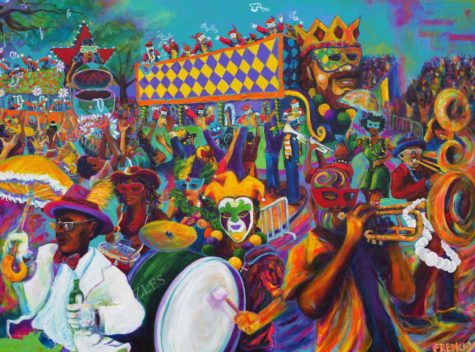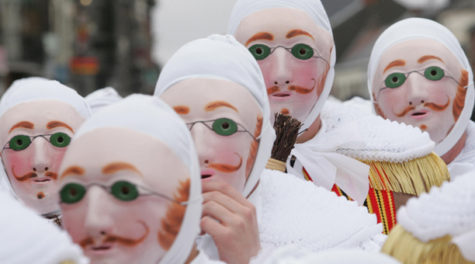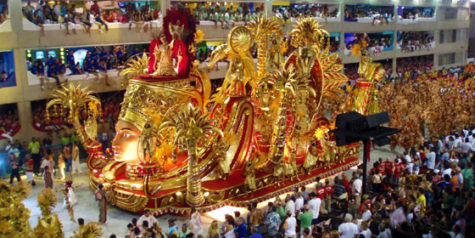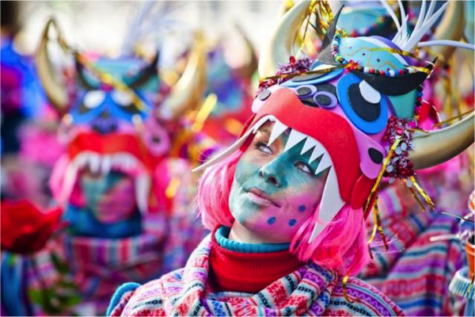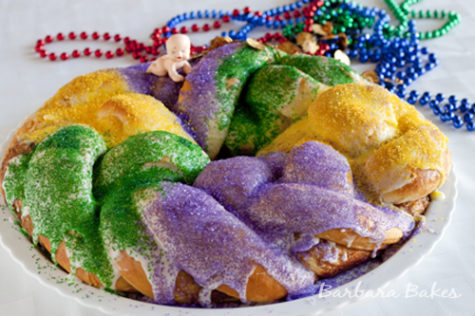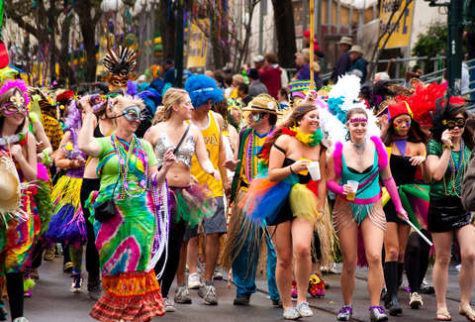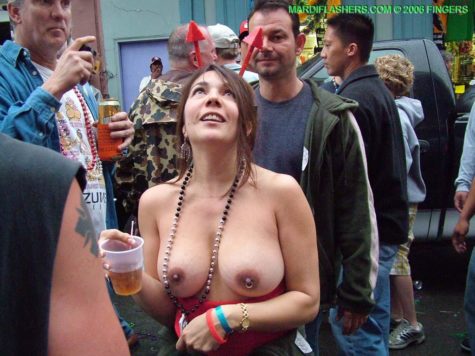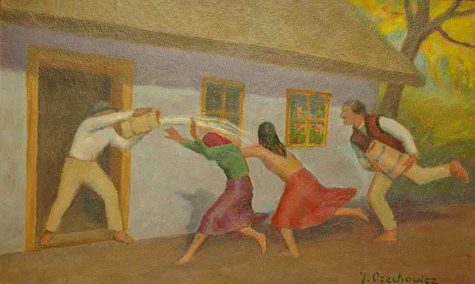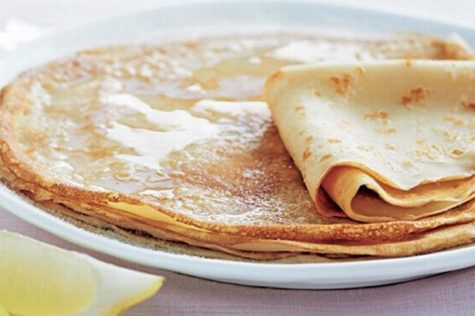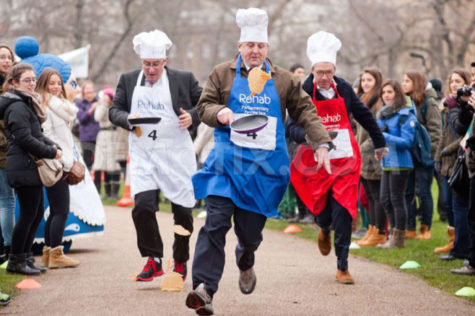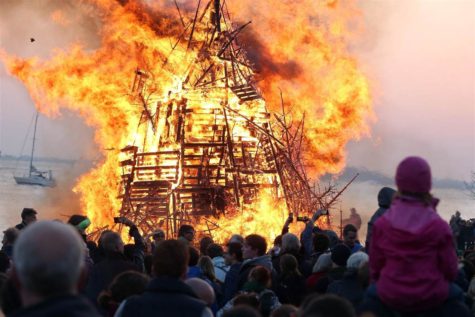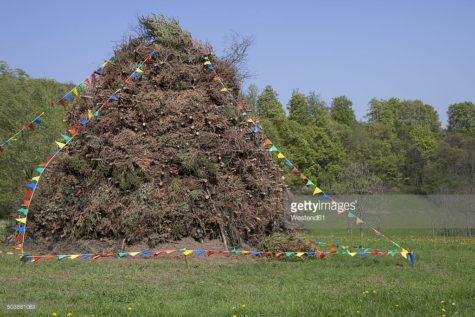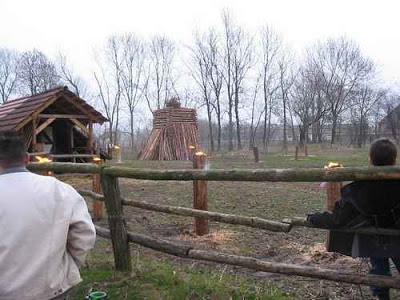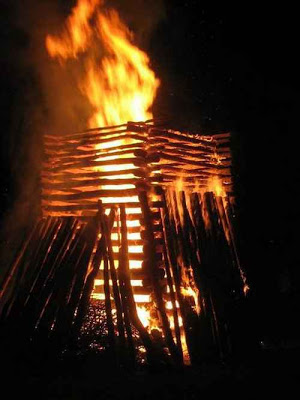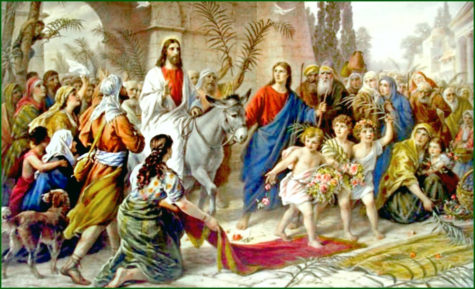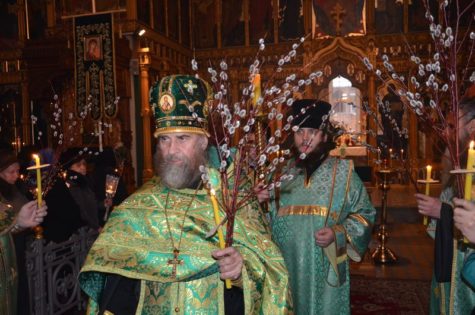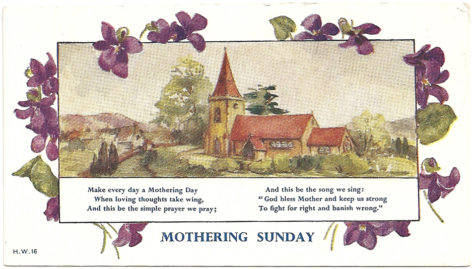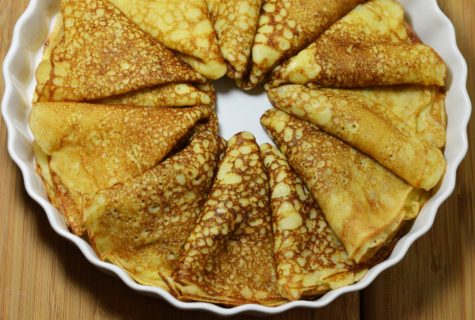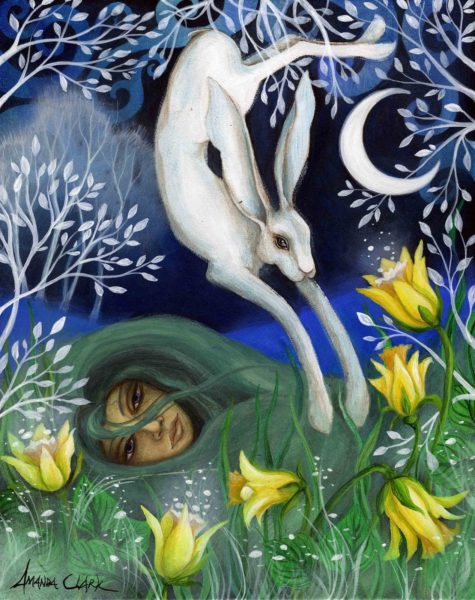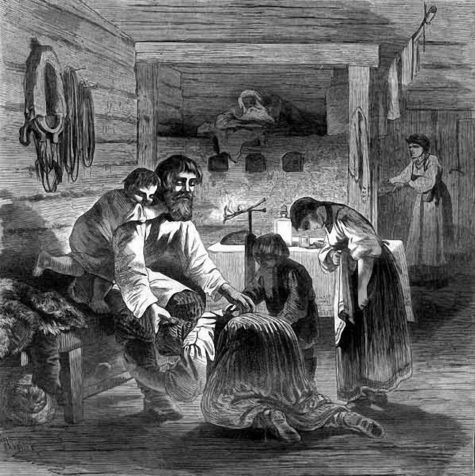Easter Celebrations
Mardi Gras is a carnival celebration that begins on Twelfth Night (the Feast of Epiphany) on January 6th and culminates on the Tuesday before Lent. The best known Mardi Gras is in New Orleans, Louisiana where it is a legal holiday.
Mardi Gras is French for Fat Tuesday, the Tuesday before Ash Wednesday. The biggest events happens on this day. The name Fat Tuesday comes from an old custom of parading a fat ox through the streets of Paris on Shrove Tuesday. The term Fat Tuesday also reflects the practice of the last night of eating rich, fatty foods before the ritual fasting of the Lenten season.
Related popular practices are associated with Shrovetide celebrations before the fasting and religious obligations associated with the penitential season of Lent. In countries such as the United Kingdom, Mardi Gras is also known as Shrove Tuesday, which is derived from the word shrive, meaning “to administer the sacrament of confession to; to absolve”
Mardi Gras traditions are rooted in Ancient Greek and Roman customs. Carnival in Rome became popular around the middle of the second century as a way to feast and act wild before the somber days of Lent. They wore costumes and masks. They celebrated Bacchus and Venus and all things glutinous and pleasurable. The Bacchus parade is still held during Mardi Gras in New Orleans.
Mardi Gras in the United States
It’s believed the first American Mardi Gras took place on March 3, 1699, when the French explorers Iberville and Bienville landed in what is now Louisiana. They held a small celebration. Each year, it got bigger with street parties, masked balls, and extravagant dinners. However, when the Spanish took over, the celebrations were banned until Louisiana became a U.S. state in 1812.
On Mardi Gras in 1827, a group of students wearing bright costumes danced through the streets of New Orleans, emulating the revelry they’d observed in Paris. Ten years later, the first recorded New Orleans Mardi Gras parade took place.
In 1872, the official Mardi Gras colors were established as purple, green, and yellow when the Russian Grand Duke Alexis Romanoff came to New Orleans during carnival in pursuit of actress Lydia Thompson. These were the colors of the Romanoff house. Purple stands for justice, green for faith, and yellow for power.
Carnival organizations are called Krewes. The first krewe was the “Mystick Krewe of Comus”, which began in 1857. The second oldest krewe is the “Krewe of Rex”, which started up in 1872. Balls and galas of elaborate and enormous proportion are held every year, but only members of the Kewes may attend.
Mardi Gras parades fill the streets. Beads, coins, balls, cups, and other trinkets are thrown to the crowds. In 1872, the Krewe of Rex, staged a daytime parade in the archduke’s honor. This parade is still held and is the largest of all the parades.
In 1916, Zulu began to parade featuring characters such as King Zulu, Big Shot, and the Witch Doctor. While Rex rules Mardi Gras with a golden scepter and jeweled crown, King Zulu carries a banana stalk and wears a lard can on his head.
Alabama and Mississippi also have Mardi Gras celebrations.
Mardi Gras in Belgium
In the Belgian city of Binche, the Mardi Gras festival is one of the most important days of the year and the summit of the Carnival of Binche. Around 1000 Gilles dance throughout the city from morning until past dusk, while traditional carnival songs play. In 2003, the “Carnival of Binche” was proclaimed one of the Masterpieces of the Oral and Intangible Heritage of Humanity by UNESCO.
Another noteworthy celebration in Belgium is Aalst Carnaval. Mardi Gras is considered the day of the “Voil Janet” or “Dirty Sissy”. Traditionally in Aalst, men dress as their wives or mothers. This custom called “Voil Janet” goes back to the time when Aalst was an industrial time and workers did not have the money to buy dresses. On Mardi Grass the “Voil Janet” gets a parade dedicated to it. Men and woman dressed traditionally get to walk along in the parade, and interact with the viewers.
The word “Voil” in the local dialect, means dirty (= Dutch “vuil”, cognate with English “foul”). For this reason, the parade is sometimes claimed obnoxious, dirty and flat out obscene. Though the parade has mellowed down over the years due to restrictions implemented by the town.
Later that day people gather around an effigy that is lit. This event is paired with a lot of music, emotions and fraternity. The event is known for the fact that almost every person in the crowd starts crying. After that, there is one last night of celebration.
Mardi Gras Around The World
- Brazil
Carnival is the most famous Brazilian holiday. During this time, Brazil attracts 70% of its tourists. Variations in carnival celebrations are observed throughout the multitude of Brazilian cities. Commonality observed among them is the incorporation of samba into the celebrations.
The southeastern cities of Brazil have massive parades that take place in large sambadromes. The Rio Carnival is where two million people celebrate in the city. The city of Salvador holds a very large carnival celebration where millions of people celebrate the party in the streets of the city with a very big diversity of musical styles together.
- Cayman Islands
The Cayman Islands Mardi Gras hosts a popular Monday Food Festival prior to the Fat Tuesday Festivities. Ash Wednesday being a holiday has a daytime party in George Town which coincides with the annual Agriculture Fair which is attended by thousands of residents.
- Colombia
Carnaval de Barranquilla is Colombia’s Mardi Gras celebration. In 2003, it was proclaimed as one of the Masterpieces of the Oral and Intangible Heritage of Humanity by UNESCO.
- Czech Republic
In the Czech Republic it is a folk tradition to celebrate Mardi Gras, which is called Masopust (meat-fast i.e. beginning of fast there). There are celebration in many places including Prague but the tradition also prevails in the villages such as Staré Hamry, whose the door-to-door processions there made it to the UNESCO World Intangible Cultural Heritage List.
- France
Carnival parades take place in many cities such as Nice, Alpes Maritimes, Dunkerque, Granville, Sarreguemines as well as in the French Caribbean islands Guadeloupe and Martinique.
The Nice Carnival is held annually in Nice on the French Riviera. The earliest records establish its existence in 1294 when the Count of Provence, Charles Anjou, wrote that he had passed “the joyous days of carnival.” This may make the Nice Carnival the original carnival celebration. Today the event attracts over a million visitors to Nice every year over a two-week period.
- Germany
The celebration on the same day in Germany knows many different terms, such as Schmutziger Donnerstag or Fetter Donnerstag (Fat Thursday), Unsinniger Donnerstag, Weiberfastnacht, Greesentag and others, and are often only one part of the whole carnival events during one or even two weeks before Ash Wednesday be called Karneval, Fasching, or Fastnacht among others, depending on the region.
In standard German, schmutzig means “dirty”, but in the Alemannic dialects schmotzig means “lard” (Schmalz), or “fat”; “Greasy Thursday”, as remaining winter stores of lard and butter used to be consumed at that time, before the fasting began. Fastnacht means “Eve of the Fast”, but all three terms cover the whole carnival season. The traditional start of the carnival season is on 11 November at 11:11 am (11/11 11:11).
- Italy
In Italy Mardi Gras is called Martedì Grasso (Fat Tuesday). It’s the main day of Carnival along with the Thursday before, called Giovedí Grasso (Fat Thursday), which ratifies the start of the celebrations. The most famous Carnivals in Italy are in Venice, Viareggio and Ivrea. Ivrea has the characteristic “Battle of Oranges” that finds its roots in medieval times. The Italian version of the festival is spelled Carnevale.
- Netherlands
The Netherlands also has a festival similar to Mardi Gras. It’s called Carnaval and is similar to the Venice Carnival. The origin of the word Carnaval is carnem levare which means “to take away meat” in Latin, or carne vale, Latin for “farewell to meat”. It marks the beginning of Lent, leading up to Easter.
The carnival in the Netherlands is mainly held in the southern part of the Netherlands in the provinces of Noord-Brabant and Limburg, some parts of Zeeland and in eastern parts of Twente and Gelderland. As with many popular festivals, people tend to loosen some moral codes and become laid-back or loose, which is based in the ancient role-reversal origins of Carnaval, including dressing in costumes.
- Russia and Ukraine
Both Russia and Ukraine have the festival of Maslenitsa (Масленица, rus.), which on its pagan side celebrates the end of winter and the upcoming summer, and on its Christian side marks the last week before the Great Fasting period before Christian Easter.
The festival includes family gatherings with festive meals and treats of bliny (crepes) that resemble the round shape of sun, and culminates on the weekend with mass outdoors gatherings, festivities and entertaining activities such as pole climbing, where a wheel with variety of presents is affixed on the top of a long pole and the contestants need to reach the top to get them.
Also the festival’s mascot – a feminine figure made out of straw, which symbolizes winter, gets put on fire at the end of the celebration.
- Sweden
In Sweden the celebration is called Fettisdagen, when you eat fastlagsbulle, more commonly called Semla. The name comes from the words “fett” (fat) and “tisdag” (Tuesday). Originally, this was the only day one should eat fastlagsbullar.
Mardi Gras Foods
Pancakes are a traditional food. Pancakes and related fried breads or pastries made with sugar, fat, and eggs are also traditionally consumed at this time in many parts of Latin America and the Caribbean.
Food in New Orleans is incredible. A Mardi Gras specialty is King Cake. It is a circular sweet roll-like cake with a hidden treasure, a tradition that originated during medieval times. Originally a gold bean was baked inside but today, to avoid choking, a plastic baby is placed inside instead.
The Twelfth Night Revelers, a Mardi Gras krewe, use a King Cake to randomly select the queen for krewe. The one who finds the baby gets to be queen. At parties, offices, and causal gatherings the lucky person who finds the baby gets to bring a King Cake to the next occasion and/or be “king” for the day. Similar cakes and breads can be found in other cultures like Rosca De Reyes in Mexico.
Costumes
Mardi Gras, as a celebration of life before the more-somber occasion of Ash Wednesday, nearly always involves the use of masks and costumes by its participants. In New Orleans, for example, these often take the shape of fairies, animals, people from myths, or various Medieval costumes as well as clowns and Native Americans. However, many costumes today are simply elaborate creations of colored feathers and capes.
Unlike Halloween, Mardi Gras costumes are not usually associated with such things as zombies, mummies, bats, blood, and the like, though death may be a theme in some. The Venice tradition has brought golden masks into the usual round of costumes.
Going Topless
Women exposing their breasts during Mardi Gras in New Orleans, USA, has been documented since 1889, when the Times-Democrat decried the “degree of immodesty exhibited by nearly all female masqueraders seen on the streets.” The practice was mostly limited to tourists in the upper Bourbon Street area. In the crowded streets of the French Quarter, generally avoided by locals on Mardi Gras Day, flashers on balconies cause crowds to form on the streets.
In the last decades of the 20th century, the rise in producing commercial videotapes catering to voyeurs helped encourage a tradition of women baring their breasts in exchange for beads and trinkets. Social scientists studying “ritual disrobement” found, at Mardi Gras 1991, 1,200 instances of body-baring in exchange for beads or other favors.
Sources:
The spirit of Poland’s Dyngus is captured in this description from the Poznan region during 1800s:
Poland’s Dyngus, or Smigus, Day is said to hark back to the baptism of the founder of Polish Christianity, Prince Mieszko I (c. 935 – 992), and his entire court, on Easter Monday, 966. Dyngus is an ancient celebration which is still observed both in country villages and the big cities, with singing, pranks, visiting friends’ houses, and the custom of dousing.
The custom of pouring water is an ancient spring rite of cleansing, purification, and fertility – at this time of year there are drenching customs enacted in Sri Lanka and Thailand during their respective New Year celebrations. In a Spring custom of pagan (pre-Christian Slavic) times, the Poles ‘confronted’ (dingen) Nature with their pouring of water and switching with pussy willows to purify themselves for the year ahead. The alternative name for the day comes from smiganie, meaning ‘switching’.
(Boys, don’t do this at home.) On Easter Monday, at around 5 am, the men creep through a neighbour’s window or chimney, often with the collusion of the male family head, into the rooms where the sleeping womenfolk are abruptly awakened by being doused with water. The girls, naturally enough, reciprocate in kind. In cities, where people are refined and perhaps girls more aware, this custom tends to be practised by the use of a sprinkle of water or cologne.
In the first recorded Polish writing on Dyngus Day; a medieval Polish historian wrote of what he termed the Oblewania.
Barely had the day dawned on Easter Monday when I woke the boys and gathered some water to start throwing it on the girls. Up with the Piwezyny! (eiderdown)! There was screaming, shouting, and confusion. The girls are shrieking and hollering, but in their hearts they are glad because they know that she who isn’t gotten wet will not be married that year. And the more they are annoyed, the more we dump water on them calling, Dyngus – Smigus! Then we had to change our clothes because there wasn’t a dry thread on the girls and we boys were not better off.
Source Unknown
Different countries and cultural traditions have different names for this day. Popular names include Pancake Day or Pancake Tuesday, Mardi Gras, Tłusty Czwartek, Fasnacht Day, Tuesday of Carnival, Fat Tuesday, and Shrove Tuesday. Shrove Tuesday is the last day of Shrovetide.
Pancake Tuesday always falls 47 days before Easter Sunday, so the date varies from year to year and falls between February 3 and March 9. In 2019 Pancake Tuesday will fall on March 5th.
During Lent, which begins the next day (Ash Wednesday), rich foods are not eaten; therefore the day before pancakes, donuts and other treats are cooked to use up the ingredients in the house. Pancake Tuesday was the last opportunity to use up eggs and fats before embarking on the Lenten fast and pancakes are the perfect way of using up these ingredients.
Pancakes are eaten with a sprinkling of sugar, and they are served with syrup. The day celebrated by excessive pancake devouring is observed in the United Kingdom, Ireland, Australia, Canada, Denmark, France, Poland, Sweden, and in parts of the United States.
Today just might be the perfect day to take a look at the following posts about pancakes:
What are pancakes?
A pancake is a thin, flat cake, made of batter and fried in a frying pan. A traditional English pancake is very thin and is served immediately. Golden syrup or lemon juice and caster sugar are the usual toppings for pancakes.
The pancake has a very long history and featured in cookery books as far back as 1439. The tradition of tossing or flipping them is almost as old: “
And every man and maide doe take their turne,
And tosse their Pancakes up for feare they burne.”
~Pasquil’s Palin, 1619.
The ingredients for pancakes can be seen to symbolize four points of significance at this time of year:
- Eggs ~ Creation
- Flour ~ The staff of life
- Salt ~ Wholesomeness
- Milk ~ Purity
To make 8 or so pancakes you will need the following:
- 8oz plain flour,
- 2 large eggs,
- 1 pint milk,
- salt.
Mix all together and whisk well. Leave to stand for 30 minutes. Heat a little oil in a frying pan, pour in enough batter to cover the base of the pan and let it cook until the base of the pancake has browned. Then shake the pan to loosen the pancake and flip the pancake over to brown the other side.
Pancake Races
In the UK, pancake races form an important part of the Shrove Tuesday celebrations – an opportunity for large numbers of people, often in fancy dress, to race down streets tossing pancakes. The object of the race is to get to the finishing line first, carrying a frying pan with a cooked pancake in it and flipping the pancake as you run.
The most famous pancake race takes place at Olney in Buckinghamshire. According to tradition, in 1445 a woman of Olney heard the shriving bell while she was making pancakes and ran to the church in her apron, still clutching her frying pan. The Olney pancake race is now world famous. Competitors have to be local housewives and they must wear an apron and a hat or scarf.
Each contestant has a frying pan containing a hot pancake. She must toss it three times during the race. The first woman to complete the course and arrive at the church, serve her pancake to the bellringer and be kissed by him, is the winner.
At Westminster School in London, the annual Pancake Grease is held. A verger from Westminster Abbey leads a procession of boys into the playground where the school cook tosses a huge pancake over a five-metre high bar. The boys then race to grab a portion of the pancake and the one who ends up with the largest piece receives a cash bonus from the Dean.
Source: Historic UK
The Easter Fire is a custom of pagan origin spread all over Europe. It is a symbol of victory, the victory of beautiful and sunny spring over the cold days of winter.
On Holy Saturday or Easter Sunday, in rare occasions also on Easter Monday, large fires are lit at dusk in numerous sections of Northwestern Europe. These regions include Denmark, parts of Sweden as well as in Finland, Northern Germany, Switzerland, and Austria.
The fire is lit usually on the top of the mountains – Easter mountain, Osterberg – and it is obtained from wood by friction. In Germany, the Easter fire is created by gathering all the Christmas trees and burning them into a huge fire, a sign for everyone to leave behind winter and prepare for spring.
Though not documented before the 16th century, the custom presumably is based on Saxon, pre-Christian traditions, that are still performed each year. There are several explanations of the meaning of these fires. The Saxons believed that around the time of Easter, Spring becomes victorious over Winter. The fires were to help chase the darkness and winter away. It was also a symbol of fertility, which works in a literal sense in that the ashes were scattered over the meadows and thereby fertilized the soil.
The pre-Christian meaning of Easter fires is hardly experienced anymore. Nowadays they are meant to bring the community together, which guarantees a pleasant night combined with the consumption of beer, mulled wine or liquor, and snacks.
Source: Wikipedia
Palm Sunday is a Christian moveable feast that falls on the Sunday before Easter. The feast commemorates Jesus’ triumphal entry into Jerusalem, an event mentioned in each of the four canonical Gospels.
In many Christian denominations, worship services on Palm Sunday include a procession of the faithful carrying palms, representing the palm branches the crowd scattered in front of Jesus as he rode into Jerusalem. The difficulty of procuring palms in unfavorable climates led to their substitution with branches of native trees, including box, olive, willow, and yew. The Sunday was often named after these substitute trees, as in Yew Sunday, or by the general term Branch Sunday.
In the Greco-Roman culture of the Roman Empire, which strongly influenced Christian tradition, the palm branch was a symbol of triumph and victory. It became the most common attribute of the goddess Nike or Victory. For contemporary Roman observers, the procession would have evoked the Roman triumph, when the triumphator laid down his arms and wore the toga, the civilian garment of peace that might be ornamented with emblems of the palm.
Although the Epistles of Paul refer to Jesus as “triumphing”, the entry into Jerusalem may not have been regularly pictured as a triumphal procession in this sense before the 13th century. In ancient Egyptian religion, the palm was carried in funeral processions and represented eternal life. The palm branch later was used as a symbol of Christian martyrs and their spiritual victory or triumph over death.
Variations of the traditional observances:
In Latvia, Palm Sunday is called “Pussy Willow Sunday”, and pussy willows – symbolizing new life – are blessed and distributed to the faithful. Children are often awakened that morning with ritualistic swats of a willow branch.
In Bulgaria, Palm Sunday is known as Tsvetnitsa (tsvete, “flower”) or Vrabnitsa (varba, “willow”), or Flower’s Day. People with flower-related names (e.g., Lilia, Margarita, Nevena, Ralitsa, Rosa, Temenuzhka, Tsvetan, Tsvetana, Tsvetelin, Tsvetelina, Tsvetko, Violeta, Yavor, Zdravko, Zjumbjul, etc.) celebrate this day as their name day.
In Finland, it is popular for children to dress up as Easter witches and go door to door in neighborhoods for coins and candy. This is an old Karelian custom called Virpominen.
In the 15th through the 17th centuries in England, Palm Sunday was frequently marked by the burning of Jack-‘o’-Lent figures. This was a straw effigy which would be stoned and abused on Ash Wednesday, and kept in the parish for burning on Palm Sunday. The symbolism was believed to be a kind of revenge on Judas Iscariot, who had betrayed Christ. The effigy could also have represented the hated figure of Winter, whose destruction prepares the way for Spring.
In Oriental Orthodox churches, palm fronds are distributed at the front of the church at the sanctuary steps, in India the sanctuary itself having been strewn with marigolds, and the congregation proceeds through and outside the church.
In the Church of Pakistan (a member of the Anglican Communion), the faithful on Palm Sunday carry palm branches into the church as they sing Psalm 24.
In many Protestant churches, children are given palms, and then walk in procession around the inside of the church.
In Hoegaarden, Belgium one of the last remaining Palm Sunday processions takes place every year. A fellowship of Twelve Apostles carries a wooden statue of Christ around the town, while children go door to door offering the palms (box) for coins.
In Italy, palm leaves are used along with small olive branches, readily available in the Mediterranean climate. These are placed at house entrances (for instance, hanging above the door) to last until the following year’s Palm Sunday. For this reason, usually palm leaves are not used whole, due to their size; instead, leaf stripes are braided into smaller shapes. Small olive branches are also often used to decorate traditional Easter cakes, along with other symbols of birth, like eggs.
When Christianity came to Lithuania, the plants which sprouted earliest were honored during spring feasts. The “verba” or “dwarfed spuce” is used instead. According to tradition, on the Saturday before Palm Sunday the Lithuanians take special care in choosing and cutting well-formed branches, which the women-folk decorate with flowers. The flowers are meticulously tied onto the branches, making the “Verba”
In the Saxon regions of the Netherlands, crosses are decorated with candy and bread, made in the form of a rooster. In the Diocese of Groningen-Leeuwarden, a great procession with oil lamps is held the night before Palm Sunday in honor of the Sorrowful Mother of Warfhuizen.
Many Polish towns and villages (the best known are Lipnica Murowana in Małopolska and Łyse) organize artificial palm competitions. The biggest of those reach above 30 meters in length; for example, the highest palm in 2008 was 33.39 meters.
In Elche, Spain, the location of Palmeral of Elche (the biggest palm grove in Europe), there is a tradition of tying and covering palm leaves to whiten them away from sunlight, and then drying and braiding them in elaborate shapes. A Spanish rhyming proverb states:
Domingo de Ramos,
quien no estrena algo,
se le caen las manos
On Palm Sunday,
the hands drop off of those who fail to wear something new.
In Wales, Palm Sunday in called ‘Sul y Blodau’ (‘Flowering Sunday’) and it is traditional to decorate graves with flowers on that day, especially in the industrial towns and villages of south Wales.
Source: Wikipedia
Mothering Sunday is a holiday celebrated by Catholic and Protestant Christians in some parts of Europe. It falls on the fourth Sunday in Lent, exactly three weeks before Easter.
The other names attributed to the fourth Sunday in Lent include:
- Refreshment Sunday
- Pudding Pie Sunday (in Surrey, England)
- Mid-Lent Sunday
- Simnel Sunday
- Rose Sunday
Simnel Sunday is named after the practice of baking simnel cakes to celebrate the reuniting of families during the austerity of Lent. (Here is a recipe: Simnel Cake.) Because there is traditionally a relaxation of Lenten vows on this particular Sunday in celebration of the fellowship of family and church, the name Refreshment Sunday is sometimes used, although rarely today.
Simnel cake is a traditional confection associated with both Mothering Sunday and Easter. Around 1600, when the celebration was only held in England and Scotland, a different kind of pastry was preferred. In England, “Mothering Buns” or “Mothering Sunday Buns” were made to celebrate. These sweet buns are topped with pink or white icing and the multi-colored sprinkles known as “hundreds and thousands” in the UK. (Here’s a recipe: Mothering Buns). They are not widely made or served today in the UK but in Australia they are a bakery staple, not related to any particular celebration. In Northern England and Scotland some preferred “Carlings”, pancakes made of steeped peas fried in butter.
It is sometimes said that Mothering Sunday was once observed as a day on which people would visit their “mother” church. During the 16th century, people returned to their mother church, the main church or cathedral of the area, for a service to be held on Laetare Sunday. This was either the church where they were baptized, or the local parish church, or more often the nearest cathedral.
Anyone who did this was commonly said to have gone “a-mothering”, although whether this term preceded the observance of Mothering Sunday is unclear. In later times, Mothering Sunday became a day when domestic servants were given a day off to visit their mother church, usually with their own mothers and other family members. The children would pick wild flowers along the way to place in the church or give to their mothers. Eventually, the religious tradition evolved into the Mothering Sunday secular tradition of giving gifts to mothers.
It was often the only time that whole families could gather together, since on other days they were prevented by conflicting working hours, and servants were not given free days on other occasions.
Whatever its origins, it is now an occasion for honoring the mothers of children and giving them presents. It is increasingly being called Mothers’ Day, although that has always been a secular event quite different from the original Mothering Sunday. In the UK and Ireland, Mothering Sunday is celebrated in the same way as Mothers’ Day is celebrated elsewhere.
By the 1920’s the custom of keeping Mothering Sunday had tended to lapse in Ireland and in continental Europe. In 1914, inspired by Anna Jarvis’s efforts in the United States, Constance Penswick-Smith created the Mothering Sunday Movement, and in 1921 she wrote a book asking for the revival of the festival.
Its wide scale revival was through the influence of American and Canadian soldiers serving abroad during World War II; the traditions of Mothering Sunday, still practiced by the Church of England and Church of Ireland were merged with the newly imported traditions and celebrated in the wider Catholic and secular society. UK-based merchants saw the commercial opportunity in the holiday and relentlessly promoted it in the UK; by the 1950’s, it was celebrated across all the UK.
People from Ireland and the UK started celebrating Mothers’ Day on the same day that Mothering Sunday was celebrated, the fourth Sunday in Lent. The two celebrations have now been mixed up, and many people think that they are the same thing.
Mothering Sunday remains in the calendar of some Canadian Anglican churches, particularly those with strong English connections.
Found at: Wikipedia
Blins or blini were symbolically considered by early Slavic peoples in pre-Christian times as a symbol of the sun, due to their round form. They were traditionally prepared at the end of winter to honor the rebirth of the new sun. This tradition was adopted by the Orthodox church (Shrovetide, Butter Week, or Maslenitsa) and is carried on to the present day. Blini were also served at wakes to commemorate the recently deceased.
Traditional Russian blini are made with yeasted batter, which is left to rise and then diluted with cold or boiling water or milk. When diluted with boiling water, they are referred to as zavarniye blini. The blini are then baked in a traditional Russian oven. The process of cooking blini is still referred to as baking in Russian, even though these days they are almost universally pan-fried, like pancakes.
French crêpes made from unyeasted batter (usually made of flour, milk, and eggs) are also not uncommon in Russia, where they are called blinchiki and are considered to be an imported dish. All kinds of flour may be used for making blini: from wheat and buckwheat to oatmeal and millet, although wheat is currently the most popular.
What follows is a recipe for traditional Russian blini from RusCuisine. These pancakes are served with different dressings – most popular are sour cream, jam, syrup, red caviar, salmon, cottage cheese and others.
Ingredients:
- 3 1/2 c All-purpose flour
- 3 tb Water warm 105-F degrees
- 1 1/2 pk Yeast dry
- 3 3/4 c Milk warm 105-F degrees
- 1 tb Sugar
- 1/2 c Heavy cream
- 1 Egg white
- 2 Egg yolks
- 1 ts Salt
- 4 tb Butter unsalted melted and cooled until just warm
Take 1 tablespoon of the flour, the warm water, 1 teaspoon of the sugar, and the yeast and mix together in a small bowl. Cover and set in a warm place for 15 minutes. Mix in a large bowl the the 1 1/2 teaspoons of sugar, flour, milk, the yeast mixture and salt. Beat by hand for 4 minutes. Cover and set in a warm place for 1 hour.
Mix the egg yolks and remaining sugar and add to the natter along with the butter and beat with an electric mixer for 3 minutes or by hand for 8 minutes. Whip the egg white separately and whip the cream as well until very stiff. Fold in the cream then the egg white making sure to mix well. Cover again and place in a warm place for 45 minutes.
Grease the skillet with butter, place 2 tablespoons of batter in the center of the skillet, (at this point you may add any of the flavor garnishes that you wish or none at all) cook for 1 minute, turn the bliny over, and cook for 35 seconds, and serve smothered in sweet butter.
Also known as: Oestre, Easter, the Spring Equinox, Vernal (Spring) Equinox, Alban Eiler (Caledonii), Méan Earraigh
- March 20 – 23 Northern Hemisphere
- September 20 – 23 Southern Hemisphere
This is the official return of the young Goddess after her Winter hibernation. As with the other Equinox and the Solstices, the date of this festival may move slightly from year to year, but many will choose to celebrate it on 21 March.
The Spring Equinox is the point of equilibrium – when light and darkness are in balance but the light is growing stronger. The balance is suspended just before spring bursts forth from winter. Night and day are of equal length at the equinox, the forces of male and female are also in balance. Ostara is a festival of balance and fertility.
In keeping with the balance of the Equinox, Oestara is a time when we seek balance within ourselves. It is a time for throwing out the old and taking on the new. We rid ourselves of those things which are no longer necessary – old habits, thoughts and feelings – and take on new ideas and thoughts. This does not mean that you use this festival as a time for berating yourself about your ‘bad’ points, but rather that you should seek to find a balance through which you can accept yourself for what you are.
It is also a celebration of birth and new life. A day when death has no power over the living.
Spring has arrived, and with it comes hope and warmth. Deep within the cold earth, seeds are beginning to sprout. In the damp fields, the livestock are preparing to give birth. In the forest, under a canopy of newly sprouted leaves, the animals of the wild ready their dens for the arrival of their young. Spring is here.
It is no coincidence that the name for this sabbat sounds similar to the word ‘Easter’. Eostre, or Ostara, is an Anglo-Saxon Dawn Goddess whose symbols are the egg and the hare. She, in turn, is the European version of the Goddess Ishtar or Astarte, whose worship dates back thousands of years and is certainly pre-Christian. Eostre also lives on in our medical language in the words ‘oestrous’ (the sexual impulse in female animals) and ‘oestrogen’ (a female hormone).
Today, Oestara is celebrated as a spring festival. Although the Goddess put on the robes of Maiden at Imbolg, here she is seen as truly embodying the spirit of spring. By this time we can see all around us the awakened land, the leaves on the trees, the flowers and the first shoots of corn.
There is some debate as to whether Oestara or Imbolg was the traditional time of spring cleaning, but certainly the casting out of the old would seem to be in sympathy with the spirit of this festival and the increased daylight at this time encourages a good clean out around the home.
The Easter Bunny also is of Pagan origin, as are baskets of flowers. Brightly colored eggs represent the child within.
Traditionally, Ostara is a time for collecting wildflowers, walking in nature’s beauty and cultivating herb gardens. Half fill a bowl with water and place a selection of flowers into it for display in a prominent position in your home.
This is the time to free yourself from anything in the past that is holding you back.
Sources: varied
The last day of the Russian Butter Festival, also called Maslenitsa , or Cheesefare Week is called “Forgiveness Sunday.” Relatives and friends ask each other for forgiveness and might offer them small presents.
At Vespers on Sunday evening, people may make a poklon (bow) before one another and ask forgiveness. Another name for Forgiveness Sunday is “Cheesefare Sunday”, because for devout Orthodox Christians it is the last day on which dairy products may be consumed until Easter. Fish, wine and olive oil will also be forbidden on most days of Great Lent.
The day following Cheesefare Sunday is called Clean Monday, because people have confessed their sins, asked forgiveness, and begun Great Lent with a clean slate.
Here is a deeper explanation of the Catholic symbolism of this day:
Before we enter the Lenten fast, we are reminded that there can be no true fast, no genuine repentance, no reconciliation with God, unless we are at the same time reconciled with one another. A fast without mutual love is the fast of demons. We do not travel the road of Lent as isolated individuals but as members of a family. Our asceticism and fasting should not separate us from others, but should link us to them with ever-stronger bonds.
Found at: Wikipedia and other sources
According to archeological evidence from 2nd century A.D. Maslenitsa may be the oldest surviving Slavic holiday. Maslenitsa has its origins in the pagan tradition. In Slavic mythology, Maslenitsa is a sun-festival, personified by the ancient god Volos, and a celebration of the imminent end of the winter. In the Christian tradition, Maslenitsa is the last week before the onset of Great Lent.
During the week of Maslenitsa, meat is already forbidden to Orthodox Christians, and it is the last week during which eggs, milk, cheese and other dairy products are permitted, leading to its name of “Cheese-fare week” or “Crepe week”. The most characteristic food of Maslenitsa is bliny thin pancakes or crepes, made from the rich foods still allowed by the Orthodox tradition that week: butter, eggs and milk. Here’s a recipe: Classic Krasnye Blini
Since Lent excludes parties, secular music, dancing and other distractions from spiritual life, Maslenitsa represents the last chance to take part in social activities that are not appropriate during the more prayerful, sober and introspective Lenten season.
In some regions, each day of Maslenitsa had its traditional activity:
Monday:
Monday may be the welcoming of “Lady Maslenitsa”. The community builds the Maslenitsa effigy out of straw (из соломы), decorated with pieces of rags, and fixed to a pole formerly known as Kostroma. It is paraded around and the first pancakes may be made and offered to the poor.
Tuesday:
On Tuesday, young men might search for a fiancée to marry after lent.
Wednesday:
On Wednesday sons-in-law may visit their mother-in-law who has prepared pancakes and invited other guests for a party.
Thursday:
Thursday may be devoted to outdoor activities. People may take off work and spend the day sledding, ice skating, snowball fights and with sleigh rides.
Friday:
On Friday sons-in-law may invite their mothers-in-law for dinner.
Saturday: Saturday may be a gathering of a young wife with her sisters-in-law to work on a good relationship.
Sunday:
Relatives and friends ask each other for forgiveness and might offer them small presents. As the culmination of the celebration people gather to “strip Lady Maslenitsa of her finery” and burn her in a bonfire. Left-over pancakes may also be thrown into the fire and Lady Maslenitsa’s ashes are buried in the snow to “fertilize the crops”.
Found at: Wikipedia

